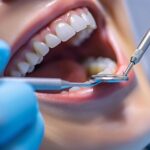
How do you perform the O Brien test?
We all have our fair share of experiencing ache or pain from sports or workout. Sometimes, these aches or pain may even occur after a long day of work. In the world of medicine, there can be many reasons underlying pain or ache resulting from discomfort. Regular health screening can help identify these issues. Since there are a lot of reasons for ache, many tests are done by doctors to identify the issues. In this article, we will be learning about the O’Brien test that is used to detect SLAP lesions.
What is SLAP lesion? SLAP or superior labral anterior posterior tears are injuries of the labrum. Labrum is a bumper-shaped piece of cartilage in the form of rims that surrounds the socket of a ball and socket of the shoulder joint. Labrum can be considered as the stabiliser of the shoulder joint. SLAP lesions make up 80 to 90{65cfa2dee81bcb6f7646c4636ebc1a3a76243bb70bbb1920546f42e59e5616c3} of labral issues and approximately 1 to 3{65cfa2dee81bcb6f7646c4636ebc1a3a76243bb70bbb1920546f42e59e5616c3} injuries in sports medicine centres. SLAP lesions are likely to occur in people aged 35 and above. This is because the labrum in these years is less firmly attached and increases the risk for SLAP lesion.
SLAP injuries are the most common injuries as result of a fall with an outstretched arm. SLAP injuries may also occur as a result of microtrauma from repetitive movement such as throwing, heavy lifting and direct trauma to the shoulder area. Common complaints of SLAP lesions are pain characterised by the on and off pain sensation with overhead movement. Other symptoms include unable to lie on the affected shoulder, painful clicking or popping with shoulder movement, loss of range of motion of the shoulder, reduced muscle strength and endurance of the shoulder. Since SLAP injuries symptoms often resemble other shoulder problems such as shoulder impingement syndrome, rotator cuff tear and acromioclavicular joint. O Brien test is a test to detect SLAP lesions and eliminate other shoulder problems. This test is done by healthcare providers such as orthopaedists, physical therapists and general physicians.
If you are wondering how O Brien test is performed, below are the steps to perform it:
1) Patient must flex the arm to 90 degrees with the elbow fully extended and horizontally adduct the arm 10-15 degrees. The forearm is in the pronation position with the thumbs pointing down.
2) The arm is then maximally internally rotated and patients resist the downward force created by the examiner. The downward force produces a stabilising force as the patient is instructed to apply an upward force. Patient is asked to report any pain if the pain is inside the shoulder.
3) Procedure is then repeated in a neutral shoulder and forearm position with maximum external rotation (forearm supination) with the examiner pressing the patient’s arm downward.
A positive O’Brien test is marked by the pain experienced when the arm is internally rotated, decreased during the external rotation and when there is clicking in the shoulder with the first position. A positive O’Brien test indicates suspicion of SLAP tears. To better understand how the O’Brien test is performed, it is best to ask healthcare professionals or watch videos on how to perform it. Remember, curiosity can kill a cat. It is alright to know the O’Brien test but not to perform it for fun and without medical supervision.
Although the O’Brien test is one of the tests that helps to diagnose a SLAP lesion, there are other physical tests needed to help ensure the diagnosis of a SLAP lesion. This includes imaging tests such as MRT arthrogram to get clear pictures of the lesion. Ask your healthcare provider if you are unsure why you are needed to undergo a test.
Treatments of SLAP injuries depend on the severity of the injuries. Generally, most SLAP injuries resolve with rest, anti-inflammatory medications, cooling patch and activity modifications. Specific treatments usually are not required and physical therapy can help restore the normal shoulder motion. However, in case of symptoms that do not go away with these measures mentioned before or severe injuries, surgery may be considered to fix the lesion, followed by rehabilitation after surgeries. Patient’s shoulder is immobilised for a few weeks of up to 8 weeks before exercise such as restoring motion and strengthening can be done.
In essence, the O’Brien test is used to detect SLAP injuries. It should only be done by healthcare professional or trained medical personnels. Patients need to have thorough discussion with their healthcare provider on treatment options available as they need to be diligent and self-discipline during the whole treatment plan in order to improve the shoulder function. If you are unsure why the pain or aches (not only shoulder joint) and already try using medicine or home remedies but the pain or aches would not go away or worse, you should talk with a doctor and not to leave it untreated or unattended. Leaving pain or ache untreated for a long time can cause complications such as discomfort or emotional distress and may affect your quality of life.





